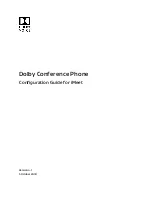
N
Names (Station And Lines)
The programmer can name every station and line connected to the system for identification and
programming purposes. On an LCD speakerphone, the name of called and calling stations appear in the
display. When a user selects a line for use or when it is ringing on a call, the line name appears in the
LCD speakerphone display.
Night Service Automatic Switching
The programmer can arrange the system to automatically enter and exit the night transfer (of ringing)
mode of operation on a timed basis.
Also refer to the discussion titled Night Transfer (Of Ringing).
Night Ringing
The attendant can manually place the system in the night ringing mode by dialing a code or pressing a
preprogrammed button. This mode overrides the direct, day 1, and day 2 automatic ringing modes.
While this feature is active, calls on lines assigned to delayed and night ringing both ring at the various
stations. No other ringing occurs unless the programmer has arranged for a loud ringing bell or other
external ringing device to sound when calls appear on those assigned lines during the night ringing mode.
These calls may be answered at any telephone in the system if the user dials the proper code.
When the attendant station includes a preprogrammed night transfer (of ringing) button, its associated
light conveys the following system ringing status: day 1 ringing = steady on, day 2 ringing = wink with
off time, night ringing = continuous wink, and manual night transfer (of ringing) = flutter.
Also refer to the discussions titled Auxiliary Ringer Interface, Common Audible Ringer Interface,
External Paging Interface, Flexible Ringing Assignments, and Line Answer From Any Station.
O
Off-Premise Extension (OPX)
Installers can locate any industry-standard telephone away from the main premises served by the system.
To enable this feature, they must use a proprietary interface device between the telephone and the DXP
Plus system and make the necessary programming entries.
On-Hook Dialing
Multiline speakerphones and monitor telephones provide manual and/or automatic dialing while it’s
handset is on-hook. An internal loudspeaker monitors call progress for completion (the user must take the
handset off-hook to provide the voice link on non-speakerphone monitor stations).
Operator Station
The system programmer designate the station that you want to ring when system users dial the operator.
Usually this station is an attendant position station; however, the operator station can be any station in the
system. In other words, the operator station does not have to be an attendant position station if you do not
want it to be one. Plus, the programmer can change the code that users dial to call the operator from a
default of 0 to the dialing code of your choice.
DXP Plus General Description
GCA40–130
Understanding The Features – 91
Содержание DXP Plus Series
Страница 1: ...Digital Communications System R ...
Страница 363: ...Automatic Call Distributor Technical Manual R QuickQ DXP ...
Страница 424: ...Automatic Call Distributor System Manager s Guide R QuickQ DXP ...
Страница 500: ...Wrap up Time 1 6 Wrapping Up A Call 4 3 Z Zoom Box A 2 GCA70 271 Index I 3 ...
Страница 628: ...Interconnecting The VMI X Installing And Programming For ExecuMail IMI89 206 Installing And Programming For ExecuMail 5 ...
Страница 677: ...Connecting The Equipment Installing And Programming The OPX X IMI89 209 Installing The OPX X 7 ...
Страница 728: ...DP I I I I and FX Series Digital Communications Systems Understanding The Visual Man Machine Interface COMDlA ...
Страница 1112: ...9 08 8 90 1 13 4 78 3 94 UNIS029 TAB003 PLS page 6 GCA40 130 DXP Plus General Description 11B Telephone Features ...
















































